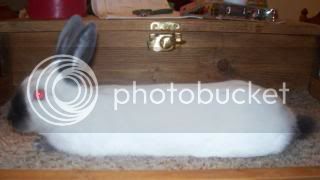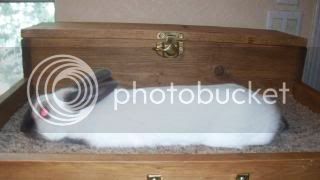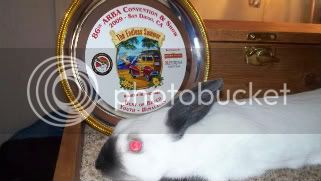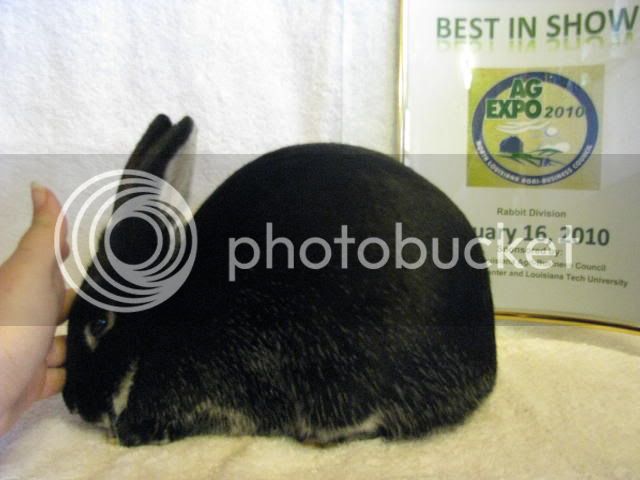Pipp
Well-Known Member
MikeScone wrote:
Great idea!
If everybody submits photos of colors, the panel can choose which photos will go on the top of the page in a two or three-pic strip, big enough to show the breed at a glance but still make it easy to see that its an info page without scrolling.
We'll have photos involving colors, posing, faults and weight (and I'm suggesting standard shots of eight week old kits), I think they'll have plenty of opportunity to take a closer look, LOL!
The whole thread will be pic heavy with all the colors repped, so it would be best to have all comfortably run two or three abreast at a glance. If its not a pain in the butt with the code, we can have them expandable, although they should be a decent size without it. They should probably include a caption with the name of the rabbit, or a 'courtesy of' credit. (ETA: I think I'd like to see this right on the photos in a consistent manner, might look cleaner).
The photos will also have to be stored in an RO Library and not with the person submitting, we really need to avoid future dead links.
sas :thanks:
Perhaps when the library thread is set up the acceptable colors for that breed can be listed with example photos of as many different colors as the person setting up the thread has on hand. Then, others can contribute pictures for the colors which are listed without photos.
I'd suggest standardizing on a fixed photo width of 450 pixels. On a standard camera, that would give a height of about 330-340 pixels on a digital camera using the computer aspect ratio (about 300 pixels with a DSLR). That should be big enough to show the rabbit clearly, but small enough to eliminate scrolling even on VGA screens, allow a fast load and reasonable number of examples on a page. This picture is 450 wide by 340 high:

Great idea!
If everybody submits photos of colors, the panel can choose which photos will go on the top of the page in a two or three-pic strip, big enough to show the breed at a glance but still make it easy to see that its an info page without scrolling.
We'll have photos involving colors, posing, faults and weight (and I'm suggesting standard shots of eight week old kits), I think they'll have plenty of opportunity to take a closer look, LOL!
The whole thread will be pic heavy with all the colors repped, so it would be best to have all comfortably run two or three abreast at a glance. If its not a pain in the butt with the code, we can have them expandable, although they should be a decent size without it. They should probably include a caption with the name of the rabbit, or a 'courtesy of' credit. (ETA: I think I'd like to see this right on the photos in a consistent manner, might look cleaner).
The photos will also have to be stored in an RO Library and not with the person submitting, we really need to avoid future dead links.
sas :thanks:










